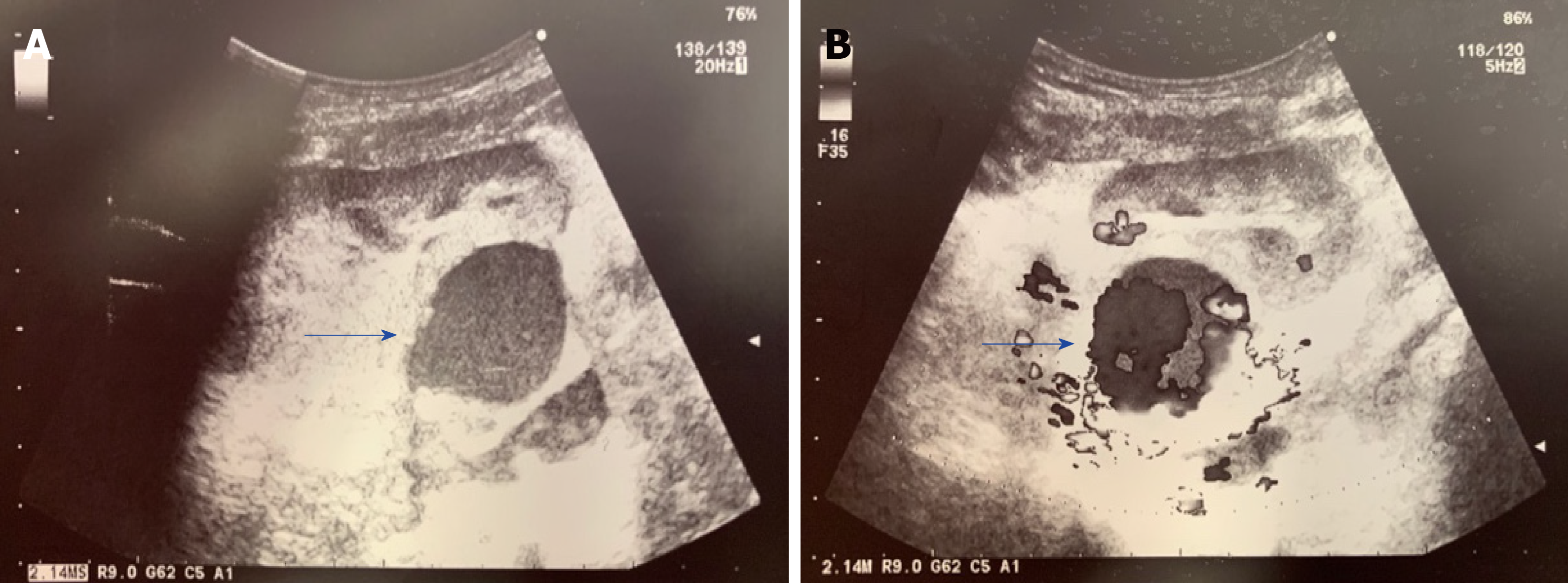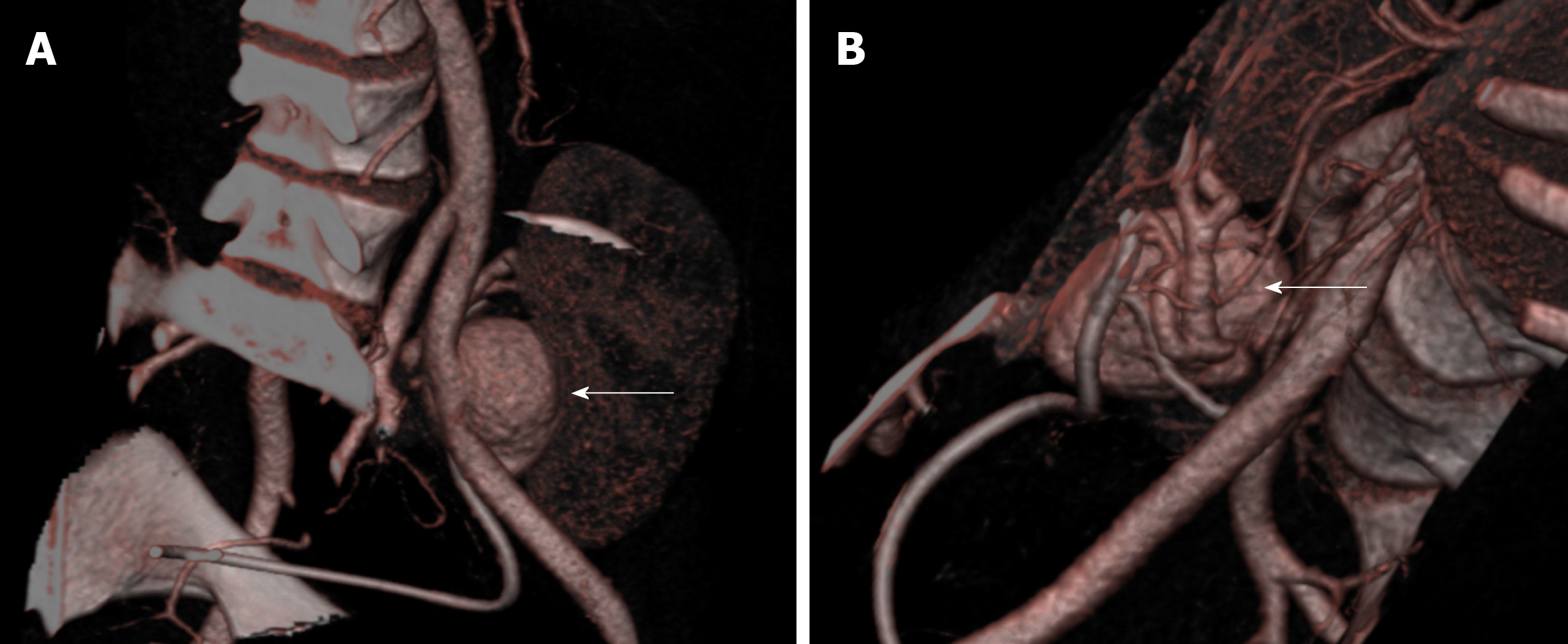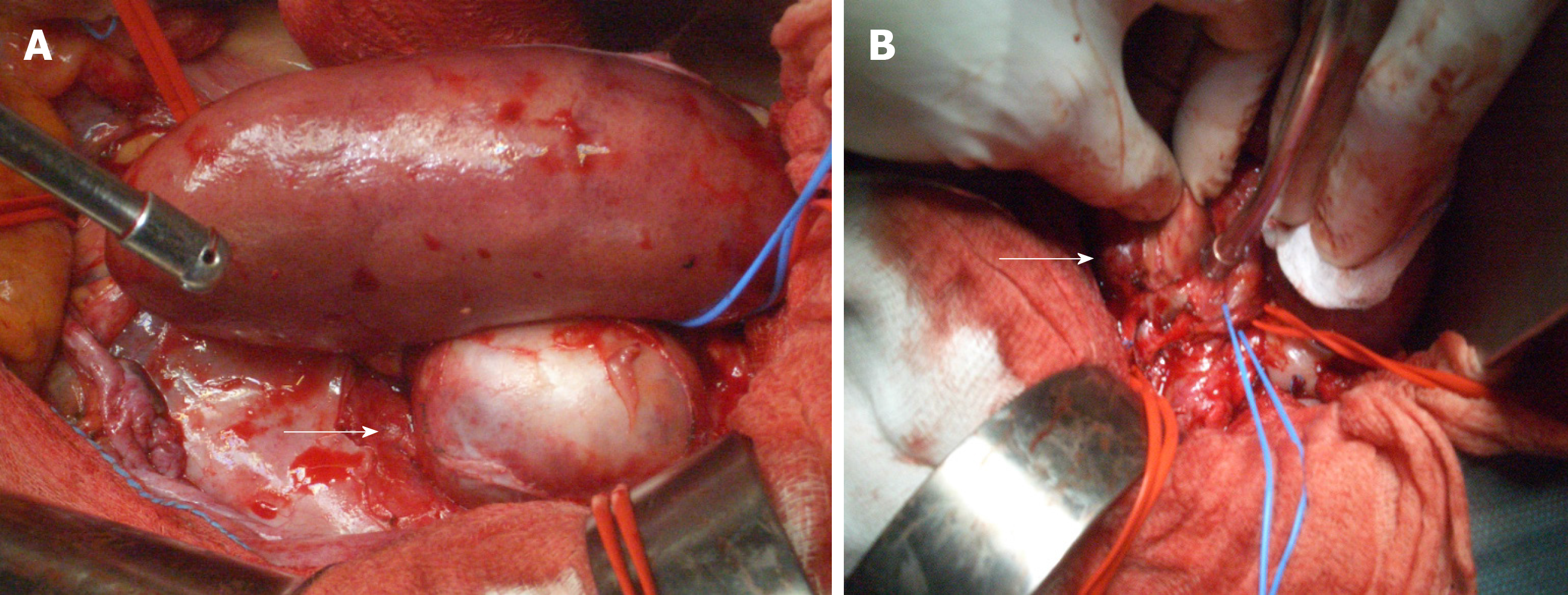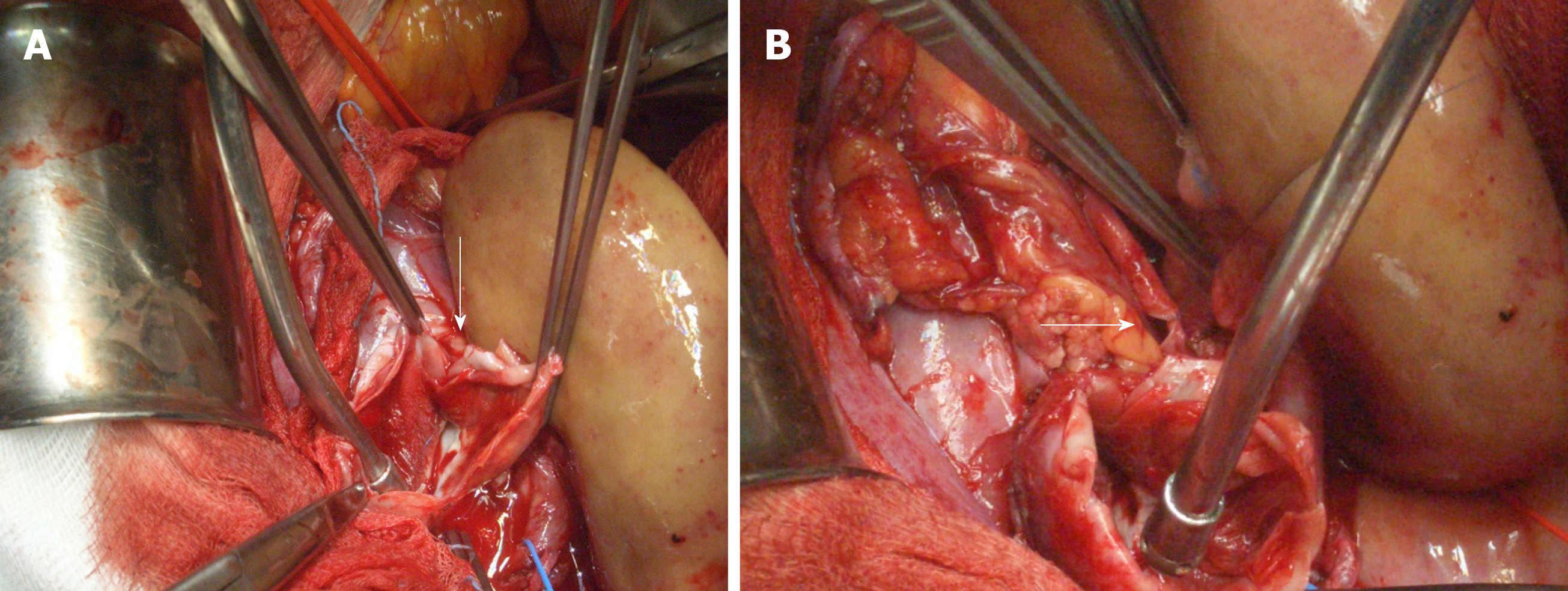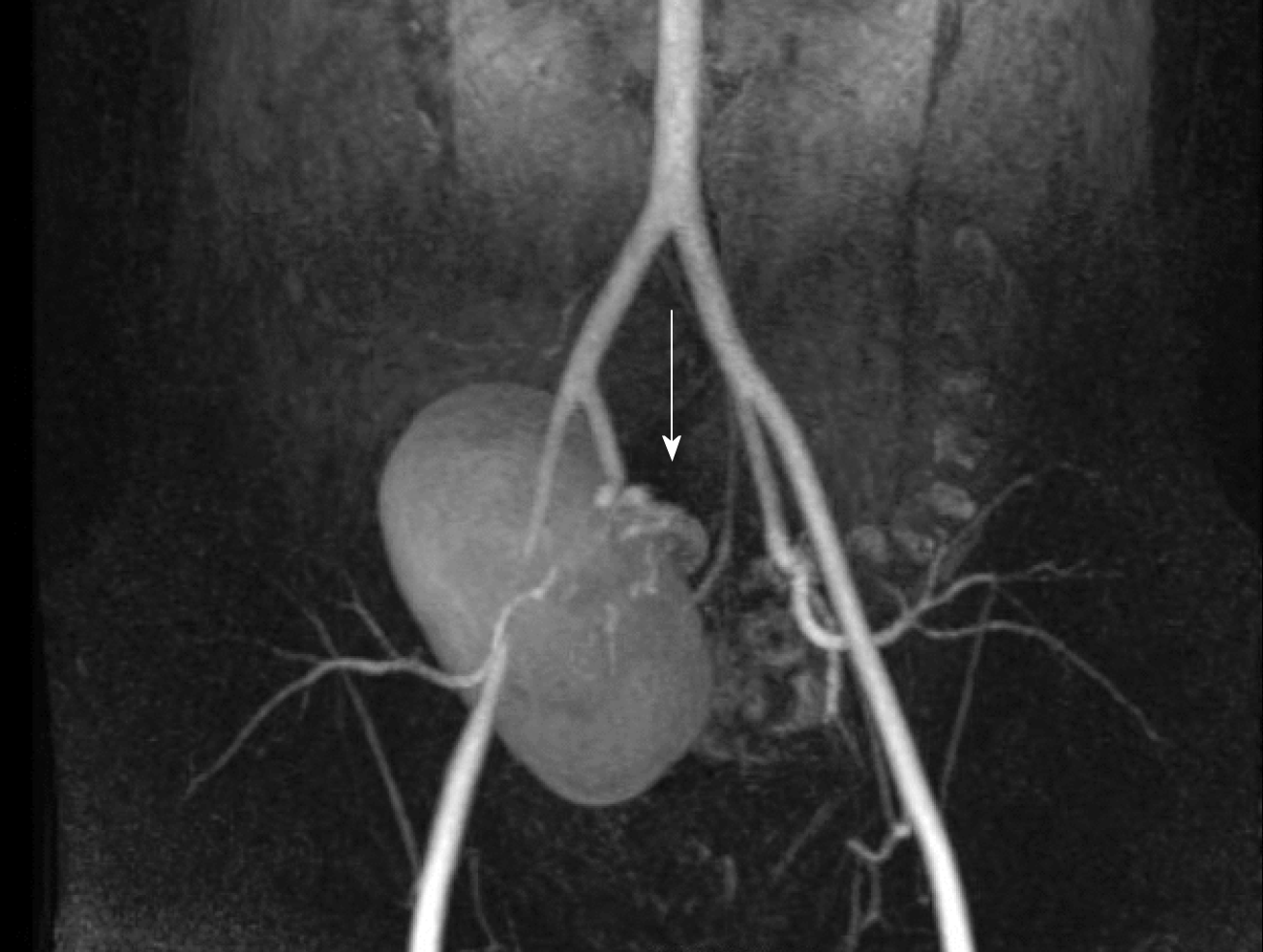Copyright
©The Author(s) 2020.
World J Clin Cases. Mar 6, 2020; 8(5): 912-921
Published online Mar 6, 2020. doi: 10.12998/wjcc.v8.i5.912
Published online Mar 6, 2020. doi: 10.12998/wjcc.v8.i5.912
Figure 1 Color Doppler ultrasound scan of the transplanted kidney.
A: Rounded, 3.8 cm-sized, hypoechoic mass localized between the hilum of the allograft and the iliac vessels (blue arrow); B: Turbulent intra-lesional flow (yin-yang sign) along the renal allograft artery (blue arrow).
Figure 2 Abdominal contrast-enhanced computed tomography scan.
A: Saccular dilation of the iuxta-anastomotic segment of the renal allograft artery, measuring 3.2 cm × 3.5 cm × 4.0 cm (white arrow); B: The aneurysm involves the main branch and extends to the bifurcation of the renal allograft artery (white arrow).
Figure 3 Intra-operative finding.
A: Large bulging aneurysm causing pressure effects on the transplanted kidney (white arrow); B: The aneurysm is saccular, wide-necked, and involves the main branch of the renal allograft artery (white arrow).
Figure 4 Surgical repair.
A: Aneurysm excision (white arrow); B: End-to-end anastomosis between the stump of the renal allograft artery and the internal iliac artery (white arrow).
Figure 5 Post-operative magnetic resonance imaging of the transplanted kidney showing the reconstructed renal allograft artery with no signs of recurrent disease (white arrow).
- Citation: Bindi M, Ferraresso M, De Simeis ML, Raison N, Clementoni L, Delbue S, Perego M, Favi E. Allograft artery mycotic aneurysm after kidney transplantation: A case report and review of literature. World J Clin Cases 2020; 8(5): 912-921
- URL: https://www.wjgnet.com/2307-8960/full/v8/i5/912.htm
- DOI: https://dx.doi.org/10.12998/wjcc.v8.i5.912









